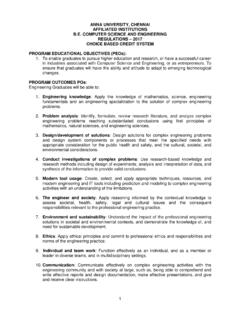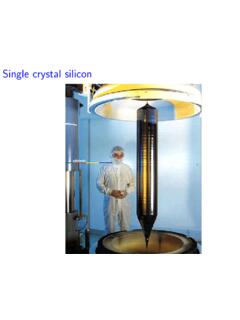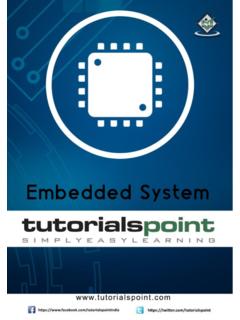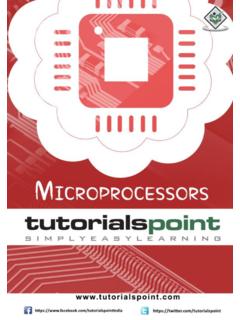Transcription of Microprocessors and Microcontrollers lab Dept of ECE
1 Microprocessors and Microcontrollers lab Dept of ECE. Geethanjali College of Engineering and Technology Cheeryal (v), Keesara (M), Ranga Reddy District. microprocessor and Microcontrollers Laboratory Student Manual For III ECE- II SEM. DEPARTMENT OF. ELECTRONICS & COMMUNICATOIN ENGINEERING. 2015-2016. INCHARGE HOD. ( ) (Dr. P. Srihari). 1|Page Geethanjali College Of Engineering And Technology, Cheeryal Microprocessors and Microcontrollers lab Dept of ECE. GEETHANJALI COLLEGE OF ENGINEERING AND TECHNOLOGY. DEPARTMENT OF Electronics and Communication Engineering (Name of the Subject ) : Microprocessors and Microcontrollers Course file (JNTU CODE A60494 ). Programme : UG. Branch : ECE Version No : 2. Year : III Document : GCET. Semester : II No.
2 Of pages :120. Classification status (Unrestricted / Restricted ) : Unrestricted Distribution List : Dept. Library, Dept Office, Concerned Faculty Prepared by: Updated by: 1) Name : M. Laxmi 1) Name : NAGA SHILPA. 2) Sign : 2) Sign : 3) Desg : Assoc. Professor. 3) Desg : Asst. Professor . 4) Date : 01-07--2014 4) Date : 23-11-2015. Verified by : * For Only. 1) Name : 1) Name : 2) Sign : 2) Sign : 3) Desg : 3) Desg : 4) Date : 4) Date : Approved by : (HOD ). 1) Name : 2) Sign : 3) Date : GCET 2|Page Microprocessors and Microcontrollers lab Dept of ECE. JAWAHARLAL NEHRU TECHNOLOGICAL UNIVERSITY. HYDERABAD. III year ECE- II SEM L T/P/D C. 0 -/3/- 2. (A60494) Microprocessors AND Microcontrollers LAB. List of Experiments The following programs/experiments are written for assembler and execute the same with8086 and 8051 kits 1.
3 Programs for 16 bit arithmetic operations for 8086 (using various addressing modes). 2. Program for sorting an array for 8086. 3. Program for searching for a number or character in a string for 8086. 4. Program for String manipulations for 8086. 5. Program for digital clock design using 8086. 6. Interfacing ADC and DAC to 8086. 7. Parallel communication between two Microprocessors using 8255. 8. Serial communication between two microprocessor kits using 8251. 9. Interfacing to 8086 and programming to control stepper motor. 10. Programming using arithmetic, logical and bit manipulation instructions of 8051. 11. Program and verify Timer/Counter in 8051. 12. Program and verify interrupt handling in 8051. 13. UART operation in 8051. 14. Communication between 8051 kit and PC.
4 15. Interfacing LCD to 8051. 16. Interfacing matrix or keyboard to 8051. 17. Data transfer from peripheral to memory through DMA controller 8237/8257. Note: Minimum of 12 experiments to be conducted. GCET 3|Page Microprocessors and Microcontrollers lab Dept of ECE. The Mission of the institute Our mission is to become a high quality premier educational institution, to create technocrats, by ensuring excellence, through enriched knowledge, creativity and self development. The Vision of the institute Geethanjali visualizes dissemination of knowledge and skills to students, who would eventually contribute to the well being of the people of the nation and global community. Vision of the Department To impart quality technical education in Electronics and Communication Engineering emphasizing analysis, design/synthesis and evaluation of hardware/embedded software using various Electronic Design Automation (EDA) tools with accent on creativity, innovation and research thereby producing competent engineers who can meet global challenges with societal commitment.
5 Mission of the Department i. To impart quality education in fundamentals of basic sciences, mathematics, electronics and communication engineering through innovative teaching-learning processes. ii. To facilitate Graduates define, design, and solve engineering problems in the field of Electronics and Communication Engineering using various Electronic Design Automation (EDA) tools. iii. To encourage research culture among faculty and students thereby facilitating them to be creative and innovative through constant interaction with R & D. organizations and Industry. iv. To inculcate teamwork, imbibe leadership qualities, professional ethics and social responsibilities in students and faculty. GCET 4|Page Microprocessors and Microcontrollers lab Dept of ECE.
6 Program Educational Objectives of B. Tech (ECE) Program : I. To prepare students with excellent comprehension of basic sciences, mathematics and engineering subjects facilitating them to gain employment or pursue postgraduate studies with an appreciation for lifelong learning. II. To train students with problem solving capabilities such as analysis and design with adequate practical skills wherein they demonstrate creativity and innovation that would enable them to develop state of the art equipment and technologies of multidisciplinary nature for societal development. III. To inculcate positive attitude, professional ethics, effective communication and interpersonal skills which would facilitate them to succeed in the chosen profession exhibiting creativity and innovation through research and development both as team member and as well as leader.
7 Program Outcomes of ECE Program: 1. An ability to apply knowledge of Mathematics, Science, and Engineering to solve complex engineering problems of Electronics and Communication Engineering systems. 2. An ability to model, simulate and design Electronics and Communication Engineering systems, conduct experiments, as well as analyze and interpret data and prepare a report with conclusions. 3. An ability to design an Electronics and Communication Engineering system, component, or process to meet desired needs within the realistic constraints such as economic, environmental, social, political, ethical, health and safety, manufacturability and sustainability. 4. An ability to function on multidisciplinary teams involving interpersonal skills. 5.
8 An ability to identify, formulate and solve engineering problems of multidisciplinary nature. 6. An understanding of professional and ethical responsibilities involved in the practice of Electronics and Communication Engineering profession. 7. An ability to communicate effectively with a range of audience on complex engineering problems of multidisciplinary nature both in oral and written form. GCET 5|Page Microprocessors and Microcontrollers lab Dept of ECE. 8. The broad education necessary to understand the impact of engineering solutions in a global, economic, environmental and societal context. 9. A recognition of the need for, and an ability to engage in life-long learning and acquire the capability for the same. 10. A knowledge of contemporary issues involved in the practice of Electronics and Communication Engineering profession 11.
9 An ability to use the techniques, skills and modern engineering tools necessary for engineering practice. 12. An ability to use modern Electronic Design Automation (EDA) tools, software and electronic equipment to analyze, synthesize and evaluate Electronics and Communication Engineering systems for multidisciplinary tasks. 13. Apply engineering and project management principles to one's own work and also to manage projects of multidisciplinary nature. Course Overview: Microelectronics is increasingly pervading all aspects of industry, education and the home. A leading example of microelectronic techniques is the microprocessor , and as its use increases the need for knowledge and understanding will also grow. The microprocessor lab was designed to give an overview over the programming of such a microprocessor system.
10 The students will write and debug assembly language programs using the Microsoft Macro Assembler (TASM)/Turbo Assembler(TASM). This Lab provides students with the opportunity to gain experience in microprocessor -based system design, assembly language programming, and I/O interfacing to Microprocessors . Course Outcomes: After completing this course, the student will be able to: 1. Apply the fundamentals of assembly level programming of Microprocessors . 2. Build a program on a microprocessor using instruction set of 8086. GCET 6|Page Microprocessors and Microcontrollers lab Dept of ECE. 3. Summarize the concepts of Assembly level language programming and its applications. 4. Develop the assembly level programming using 8086 instruction set. 5.
















